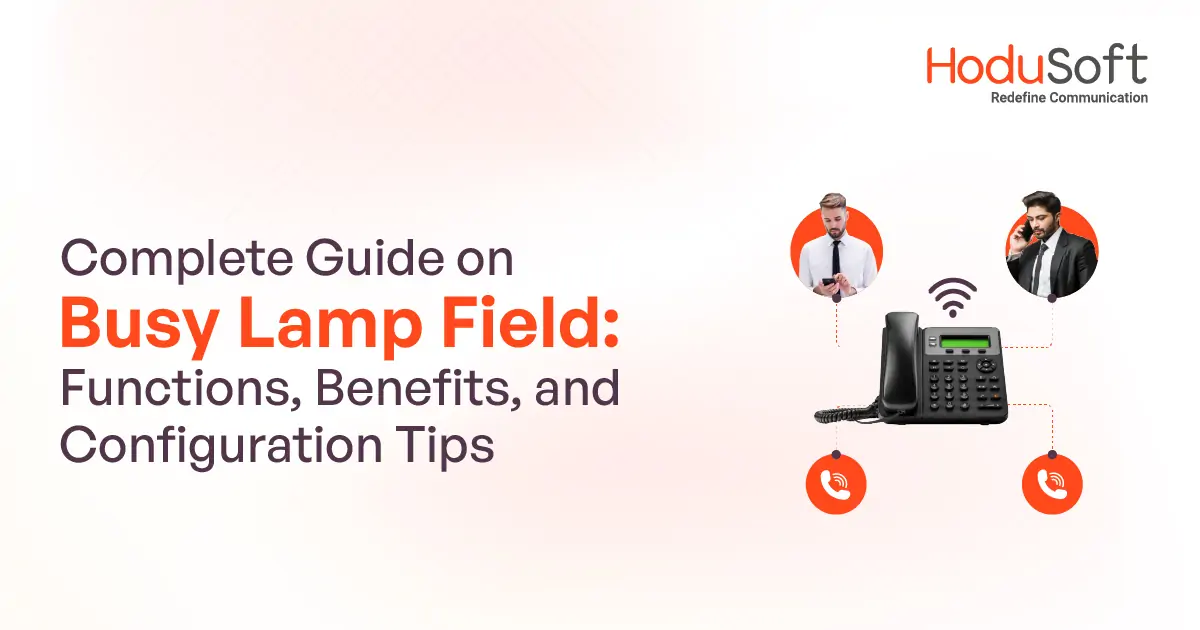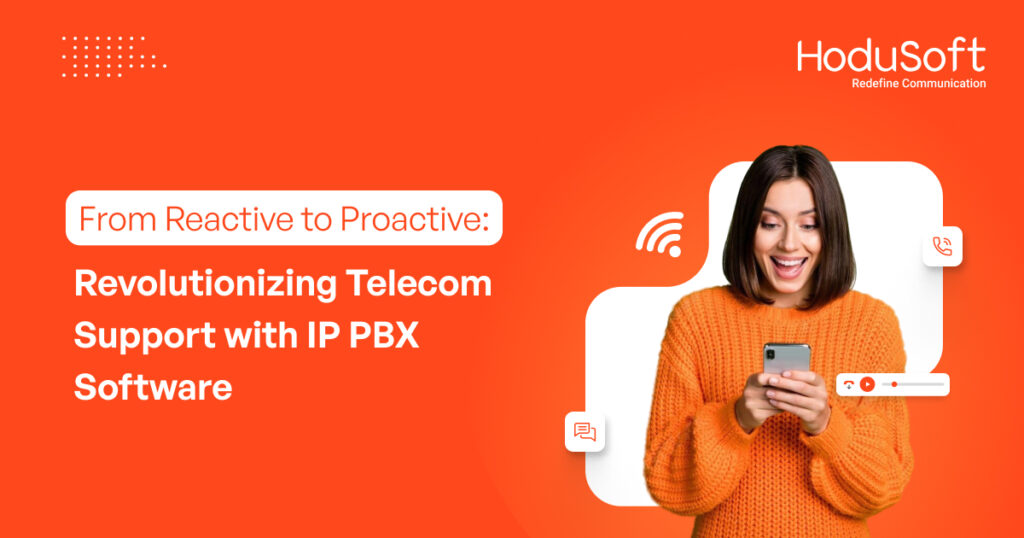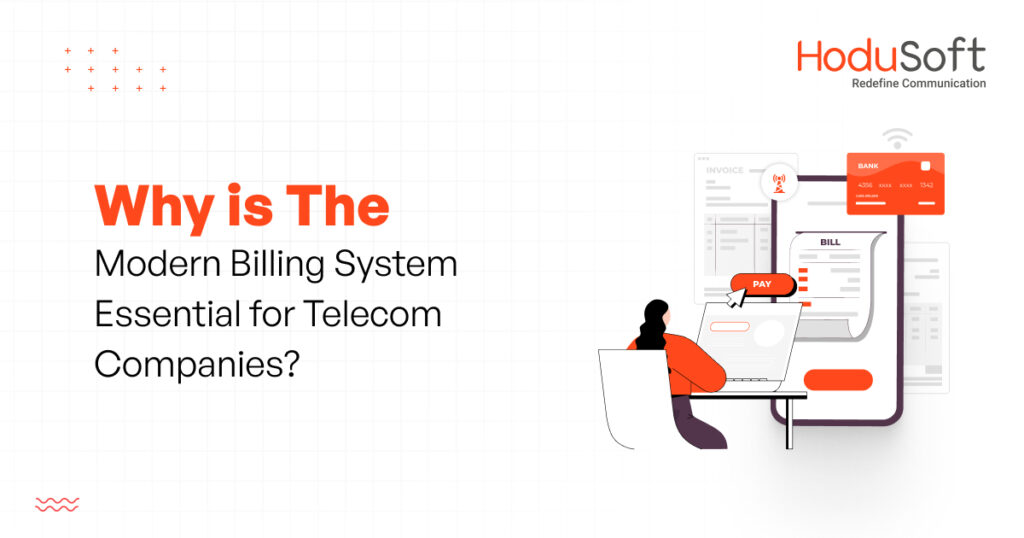Complete Guide on Busy Lamp Field: Functions, Benefits, and Configuration Tips
Just imagine how frustrating it would be if you have a room full of customer service representatives in your call center but you have no idea how many of them are speaking with callers and how many of them are available.
But thankfully, there is a feature in sophisticated business phone systems that can let you know just that. It’s known as Busy Lamp Field. If you let your imagination run wild, you may find it almost similar to traffic lights on a VoIP phone system. Simply put, it usually comprises three different colored lights—green, red, and yellow—that enable you to see who is available for a phone call at any particular time.
This blog post details everything you need to know about the feature, how it works, what are its functions and benefits, as well as how to set it up and configure it. Read on and thank us later.
What is a Busy Lamp Field?
Busy Lamp Field (BLF) is an indicator (a light) on a VoIP phone system that enables you to see how many customer service representatives are available and how many of them are busy for a phone call at any particular time.
BLF is an extremely important tool for every business whose operations depend on phone calls. Some examples are contact centers, call centers, customer-facing businesses (in healthcare, hospitality, and banking and finance sector) market research and survey companies, sales and marketing agencies, customer service, and support organizations.
It’s extremely beneficial after the COVID-19 pandemic when agents are working remotely. It can show the availability status of an agent if they’re in a different office, in a different state, or even in a different country.
How does it work?
A Busy Lamp Field (BLF) is a feature found on many business phone systems, VoIP phone systems, and PBX systems. It provides a visual indication of the status of other extensions in the system.
Busy Lamp Field is like a traffic light for your phone. It helps you know who is available, who is on the phone, and who is busy with a glance. For example, green may indicate that the extension is idle, red may indicate that the extension is in use, and yellow may indicate that the extension is on hold.
The BLF also allows users to quickly transfer calls to other extensions or initiate conference calls. Some systems also allow users to initiate intercom calls directly from the BLF.
Before the phone systems that support BLF can show presence information, they need to be configured via the management interface found on the online dashboard. After the configuration is complete, the phone system sends a request to the IP PBX.
The server will authenticate the subscriber (which is the phone system that’s making the request) and begin tracking the extension. The IP PBX (Internet Protocol Private Branch Exchange) phone system will send a Session Initiated Protocol (SIP) message notifying the phone about the present state of the extension, which the device must acknowledge.
After that, the server will track the extension (or list of extensions) requested and send messages after the status changes.
What are the functions of BLF?
As we have already discussed, Busy Lamp Field displays a clear status of an extension’s (as well as an agent’s) availability or unavailability. By doing so, it has provided call centers with a wide range of functions since its introduction. Here are some important functions of BLF:
Indicate presence:
The very purpose of BLF is to indicate the presence of agents. It lights up when the agents are at their desks and lights off when they are away.
Check availability:
BLF can also indicate the availability of a user, whether they are on the phone, in a meeting, or away from their desk.
Pick-up calls:
BLF can be configured to answer incoming calls meant for a particular extension. If an agent is away from their desk or unable to take the call for some reason, then some other agent can be assigned to take the call.
Make calls:
Did you know that BLF can be used to initiate calls from one user to another, by simply pressing a button?
Hold and transfer calls:
BLF can be used to put calls on hold, allowing users to easily transfer calls between users.
Conference calls:
BLF can be used to initiate conference calls, allowing users to add multiple users to a single call.
Create shortcuts:
BLFs can be used to create shortcuts, which allow users to quickly access frequently used features.
Integrate with other systems:
BLFs can be integrated with other systems, such as email and calendars, allowing users to view their schedules and emails without having to leave their desks.
Constant monitoring:
BLFs constantly monitor a list of specific extensions for status changes. That can enable managers and supervisors to know how much time agents spend on calls and how productive they are.
Reliable support:
High-quality BLFs can support up to 50 lines and enable users to show the phone status (such as ‘ringing,’ ‘idle,’ or ‘on a call) of other extensions.
What are the benefits of BLF?
Since their introduction, BLFs have been extremely beneficial for call centers, contact centers, and many other customer-facing businesses in several circumstances. Let’s take a look at how:
Improved agents’ productivity:
Did you know that BLF can enhance employee productivity? “How?” you ask. Well, when BLFs indicate the availability (or unavailability) of some agents then managers and supervisors don’t have to rely on tedious communication methods (walking around the aisles to check on agents) to know the availability status.
Alert about incoming calls:
The flashing lights alert agents about incoming calls. If someone is busy then someone else can pick up the call. Apart from that, a VoIP phone system can show the call status of another VoIP phone system, thereby allowing call transfer or pickup from another extension.
Improved coordination and collaboration:
BLF allows for more collaboration between teams. When teams can easily see who is available and how long they are available for work, they can plan and delegate tasks more easily. When management and senior team members can see the availability status of individual agents, they can schedule meetings and training sessions accordingly.
Increased visibility and transparency:
This one is quite self-explanatory. BLF enables team members to see the availability of individual agents and that increases transparency within the team. When the management team as well as managers and supervisors can see the availability of their team members clearly and transparently, they can trust their colleagues more.
Seamless integration:
BLF easily integrates with a wide range of ongoing applications such as VoIP phone systems, which makes for an easier transition. BLFs can be physically integrated into a business phone system or can be set up as an add-on module.
Zero errors:
There is nothing fancy about BLFs. They are just lighting devices that show the availability and busy status of agents in a call center (or a contact center). But one of their biggest advantages is their simplicity as well as their accuracy. Even if they show how many agents are busy with calls and how many of them are available, they don’t make any errors while showing that.
Mobile access:
BLFs can be easily linked to any mobile device such as smartphones and tablets. The only prerequisite is that the mobile devices should be integrated into fixed mobile convergence (FMC) environments. That would enable managers and supervisors to see the availability status of remote agents who use smartphones or mobile devices to handle calls.
Increased accessibility:
Employees can see who is available and who isn’t from anywhere, giving them the flexibility to work from various locations. For instance, the BLF on a remote agent’s phone could be configured to show presence data.
Reduced on-hold and waiting time:
BLFs can be used effectively to reduce on-hold and waiting time. Callers don’t have to be kept waiting or put on hold for long. Managers and supervisors can monitor the queued calls and transfer them to the available agents as soon as they can.
Easily configurable:
BLFs are easily configurable and can be configured to be associated with several extension numbers. In such scenarios, agents can use the BLF keys to transfer incoming calls from one extension to another without disrupting ongoing calls.
Saves time and money:
BLF saves a lot of time and resources for call center owners and managers as it eliminates the need for physical supervision to check how many agents are busy with calls and how many are sitting idle. The blinking of the light and its changing colors can provide all crucial information about agents’ availability in real-time.
BLF and associated function keys
BLFs are directly connected to the associated function keys, which are assigned to individual lamps and can be used for several functions. A blinking light or a steady light can show the status of a business phone system.
Usually, a blinking light indicates an incoming call and a steady light indicates an ongoing call. Based on the light, agents can use the associated function key to pick up incoming calls or make outgoing calls.
If the line is free at any given moment, agents can make a phone call with just a press on the function key (or a mouse click in case the BLF is a feature of call center software or contact center software).
BLF for mobile phones
BLFs can be used in smartphones and other mobile devices such as tablets as long as the devices are integrated into fixed mobile convergence (FMC) environments.
In such scenarios, the BLF can show the status of an agent who is handling calls using a smartphone or mobile device even if they are in a completely different location. BLF can be linked to mobile devices just like a normal extension.
BLFs for desk phones
If you have seen desk phones, then you must have seen small lights blinking on a panel of side buttons. It almost looks as if the business phone system has traffic lighting fitted to it.
One button has a green blinker, while the other has an orange or red one. These are known as BLF keys, which enable users to connect to different extensions based on the configuration.
How to set up BLF?
Setting up BLF on your IP phone is not a difficult task. Here’s a step-by-step guide on how to set up BLF:
- Access the web interface of your VoIP phone system. This can normally be done by typing in the IP address of your phone into a web browser.
- Once you’re logged in to your IP phone, click on the “Extensions” tab. After that, click on the “BLF” tab.
- You will see a list of available extensions. Select the extensions you want to monitor and click “Save”.
- To check if the BLF has been set up correctly, dial the selected extensions. If the status lights on the IP phone associated with the BLF button illuminate, the setup is successful.
By following the above steps, you can set up BLF on your IP phone.
How to configure BLF?
Configuring BLF is simple. In the very first step, gather all the information you need to configure BLF. You should have the phone numbers and extensions of all the people you intend to monitor.
You must also know if your phone network uses SIP protocols or the Signaling Communication Network (SCN) protocol.
After you have all the information you need, the next step is to configure your phones. Each phone will need to have its buttons configured to its corresponding extensions.
You may need to purchase additional buttons or use the existing ones on your phone. Once the buttons are configured you can begin to assign call status to them. These call statuses will include idle, ringing, busy, and unavailable, just to name a few.
After the buttons are correctly configured, assign call status to each. You can do that using the firmware of the phone or by accessing the switchboard.
Through the switchboard, you will be able to assign call status to the buttons corresponding to the phone numbers and their designated extensions. It’s important to note that you may need administrator access of some kind to do this.
In the next step, turn on the appropriate LED lights. These lights will indicate the call status of each button. The LED lights should be designated to each of the call statuses and will indicate when a person is available, busy, on the phone, or unavailable.
In the fifth step, test the system. Make sure all the LED lights are illuminated when a person is on the phone and that the buttons are correctly labeled with the appropriate call status.
When testing, it’s important to double-check the switchboard and ensure that all the LED lights and call statuses are correctly assigned.
Taking everything into account
A VoIP phone system comes with a wide range of sophisticated features, some of which work quite visibly, and some work in stealth mode to ensure high-quality calls.
BLF belongs to the former category, but it’s an extremely important feature in a business phone system. It enables managers and supervisors to see the number of agents available for a phone call and the number of agents already busy with callers.
Like traffic lights, it comes in three colors: red, green, and yellow. A green light signifies that an extension is available and free to talk. If it flashes yellow, then the extension is getting incoming calls. And if it turns red, then the extension is in use or the agent isn’t available to take the call.
At HoduSoft, we have the BLF feature in three of our leading products HoduCC- Call Center Software, HoduCC- Contact Center Software, and HoduPBX- IP PBX Software.
We also enable easy configuration of the BLF to help you know your agents’ availability, enhance productivity, and provide superior customer service and experience. If you want to know more about any of our products or our advanced BLF feature, contact us today to get a free demo.



